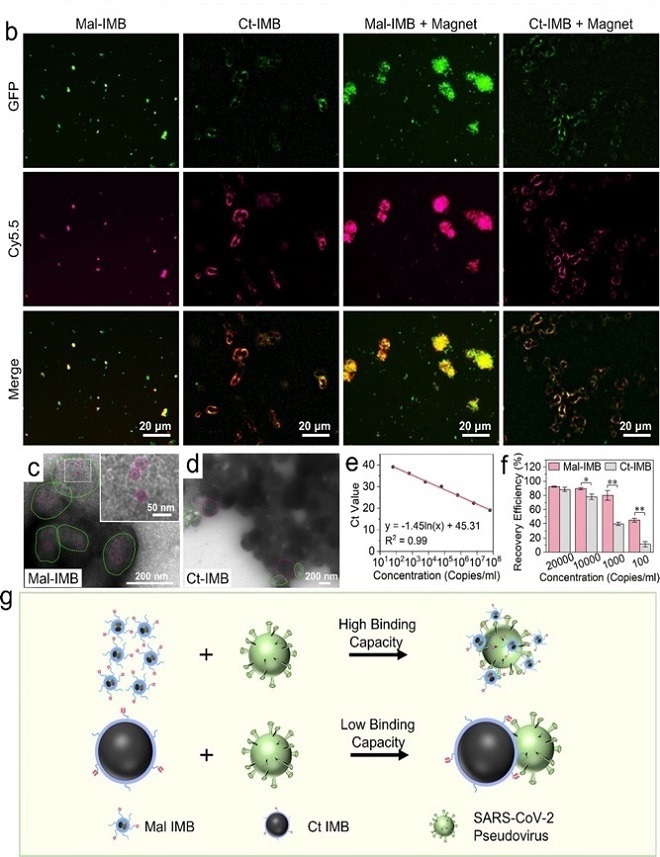A study team from the Hefei Institutes of Physical Science (HFIPS), Chinese Academy of Science (CAS), led by Professor Junfeng Wang, recently created a more effective method to test the SARS-CoV-2 virus.

Ultra-small Mal-IMB immune magnetic beads demonstrate efficient magnetic enrichment of COVID-19 and schematic illustration of its mechanism. Image Credit: Kun Ma
They successfully linked the SARS-CoV-2 pseudovirus to the unique nano-immune magnetic bead (Mal-IMB) they created in this study, which can then be manufactured into magnetic nanoparticles for the investigation of protein biomimetic mineralization.
Analytical Chemistry has published the findings.
Public health has been significantly impacted by the new coronavirus pneumonia caused by the extremely infectious SARS-CoV-2 virus. There is a need for a simple and efficient viral isolation technique. Immune magnetic beads (IMBs), which bind to target substances using magnetic microspheres with particular probes, have demonstrated important benefits.
However, issues like low target substance concentration and complicated biological conditions make employing IMBs in biological separations difficult. It has been recommended to use small magnetic beads, which can pass through contaminants and lessen nonspecific binding.
Using ultra-small single-chain antibody fragments (RBD-scFv) that target the RBD region of the S protein, the research team paired them with ultra-small cluster magnetic nanobeads in this study.
This work was based on earlier work on biomimetic mineralization synthesis. The SARS-CoV-2 pseudovirus was then added to these extremely effective, extremely small immunological magnetic beads for recognizing RBD antigens.
This innovative bead is designed to address the challenges of enrichment and detection of the novel coronavirus in complex biological environments.
Kun Ma, Associate Professor, Hefei Institutes of Physical Science, Chinese Academy of Sciences
The magnetic characteristics, homogeneity, and chemical stability of cluster magnetic beads were outstanding. A viable method for the quick and efficient enrichment and separation of COVID-19, they also showed steady capture capacity and enhanced binding efficiency due to their small size.
Mal-IMB demonstrated a maximal viral loading capacity of 83 μg/mg in complicated biological contexts and could successfully concentrate pseudoviruses as low as 70 copies/mL when compared to conventional beads.
Additionally, through the use of immunofluorescence and transmission electron microscopy, the mechanism of ultra-small magnetic bead enrichment in complex biological environments was further clarified. This not only showed the effectiveness of the novel immune magnetic beads but also offered helpful information for enhancing their performance in such environments.
Journal Reference
Tao, T., et al. (2023) Boosting SARS-CoV-2 Enrichment with Ultrasmall Immunomagnetic Beads Featuring Superior Magnetic Moment. Analytical Chemistry. doi:10.1021/acs.analchem.3c02257